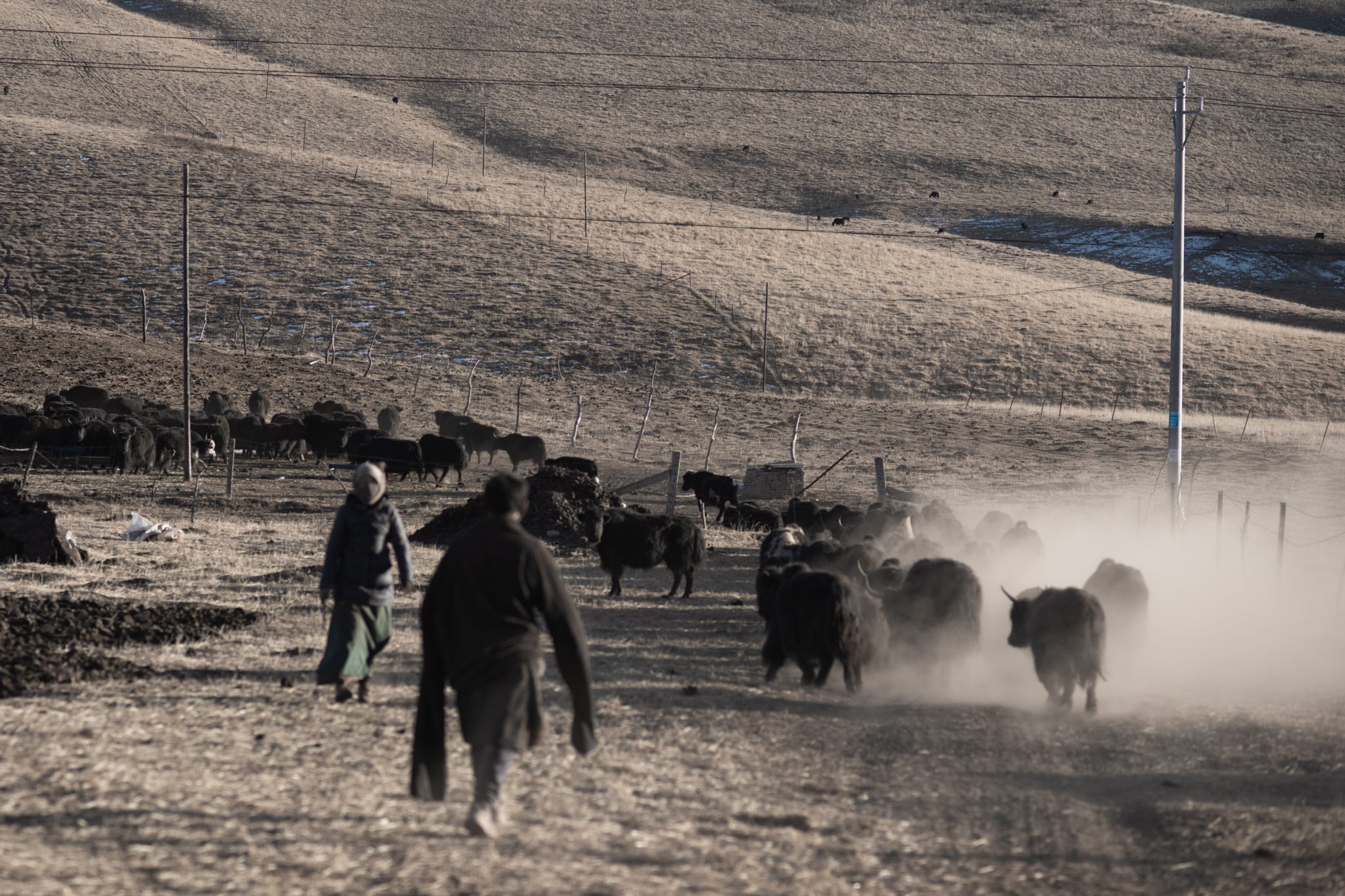Environment & Lifestyle
With an average altitude exceeding 4,500 metres (14,800 ft) and winter temperatures dropping as low as −40 °C, the Tibetan Plateau is a vast expanse located on the Roof of the World. Only individuals with a symbiotic relationship with nature can sustainably inhabit such a place.
The Tibetan nomads have been the guardians and caretakers of the plateau for over nine millennia. Their enduring lifestyle, rooted in altruism and deep respect for the natural world, is essential for maintaining the delicate balance of the ecosystem on the Roof of the World. From childhood, nomads develop a sense of intimacy with nature, free of fear or unfamiliarity. Through this connection, they are able to thrive by living an interconnected existence with their natural counterparts.
At its core, the nomadic lifestyle involves movement and self-sufficiency. Nomads spend winters in one location and move to different pastures as the seasons change, following the availability of grass and water. By rotating grazing areas, they help prevent overgrazing, allowing vegetation to recover throughout the year. In daily life, they use only materials sourced from their natural surroundings to make clothing, shelter, tools, and other necessities. This approach naturally minimizes waste and environmental footprint, as anything left behind readily decomposes back into the ecosystem.
The Yak
Tibetan nomads raise a variety of animals, including Yaks, sheep, goats, and horses. Among them, Yaks hold the most significance, sharing a sacred bond of interdependence with the nomads and providing both prosperity and survival. The Yak offers sustenance in the form of milk, meat, hair, wool, and hides. Even its dung is used as fuel for cooking and heating. Its sturdy frame also makes it a reliable pack animal and a trusted companion for transportation. Yaks are held in such high regard that they are synonymous with the term Nor, referring to the idea of wealth. Indigenous to the regions of Central Asia, stretching from the Himalayas to the Tibetan Plateau, the Yak is uniquely adapted to survive and thrive in the plateau’s challenging terrain, including high altitudes, extreme cold, low oxygen levels, and intense solar radiation. The Tibetan Plateau ranges from 3,000 to 6,000 metres in elevation, with warmer temperatures in summer and winter temperatures dropping as low as −40 °C.
The Yak serves as a symbol of strength, resilience, and selflessness. These are the same qualities the nomads strive to embody in their own lives. Beyond its symbolic value, the Yak contributes to the health of the grasslands by compacting soil, removing unwanted weeds, and enhancing soil fertility with its dung. Compared to industrial livestock and other bovines, the Yak causes minimal environmental damage over its lifetime and actively helps maintain the ecological balance of the Tibetan Plateau. Seasonal grazing patterns also help prevent overgrazing in any single area. This is especially significant in regions where the high demand for cashmere has led to accelerated desertification. Studies have also shown that Yaks emit lower levels of methane compared to other ruminants, making them an environmentally friendly companion. Together, nomads and their Yaks tread lightly on the land and thrive within a circular economy in which the Yak acts as an intermediary between nature and humankind.
Modern Changes and Challenges
The nomadic lifestyle stands in stark contrast to the modern urban world, which often treats nature as an infinite resource. Studies show that the nomads’ knowledge and wisdom for living in harmony with their environment are vital to conserving the Tibetan Plateau and reversing grassland degradation.
However, this once-prevalent lifestyle is fading. The landscape is being reshaped by industrialization and urbanization. The nomadic culture, long untouched by the forces of industrialism, is slowly disappearing. Increasing numbers of younger herders are leaving their plateau homes due to social and economic pressures. This shift is deeply concerning, as the nomadic way of life is intrinsically intertwined with the plateau. If the nomads vanish, so too will their livestock and the splendour of the grasslands. The loss of such a culture would mark the end of a lifestyle that has enabled sustainable human existence for thousands of years. Without it, the “Water Tower of Asia” is at risk of becoming the world's highest desert.

